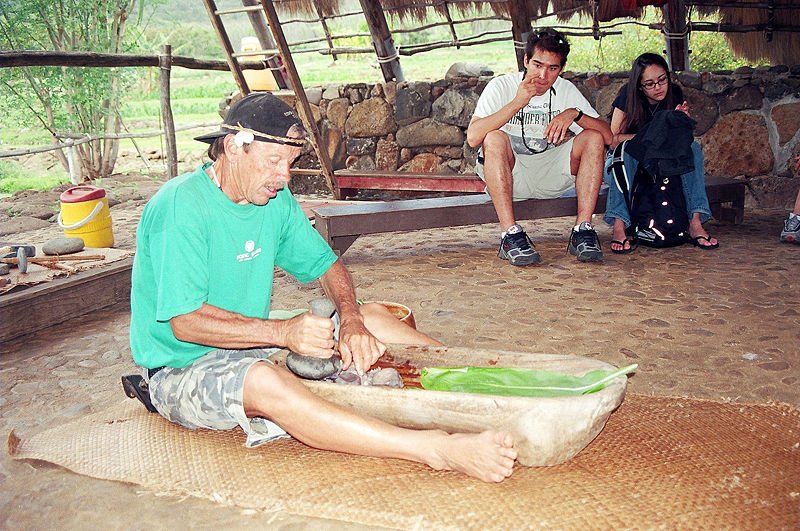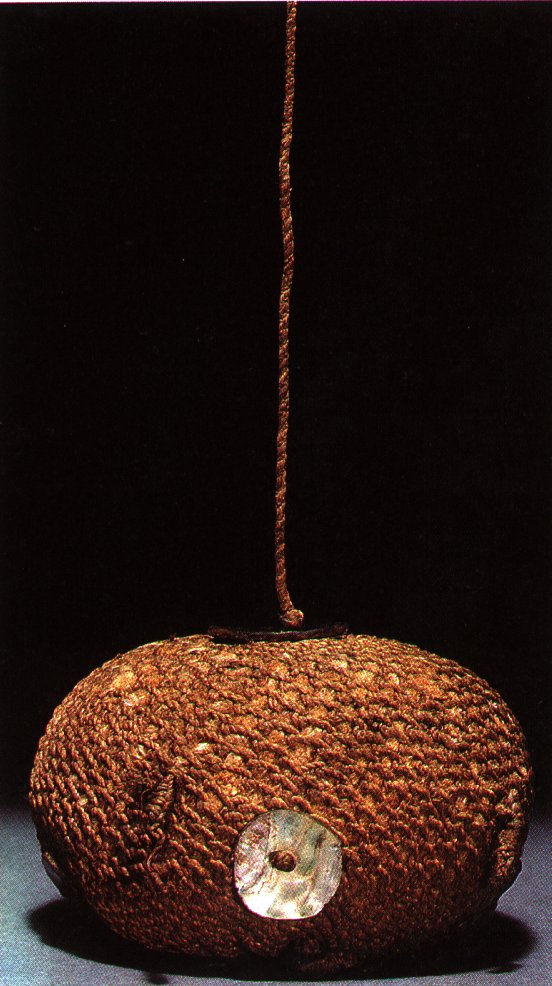
Poi should not be confused with Tahitian po'e, which is a sweet, pudding-like dish made with bananas, papaya, or mangoes cooked with manioc and coconut cream.
Most first-time tasters describe poi as resembling library paste - more an allusion to the texture than the fruit, which is delicate. The flavor changes distinctly once the poi has been made. Fresh poi is sweet and edible all by itself. Each day thereafter the poi loses sweetness and turns slightly sour. Because of this, some people find poi more palatable when it is mixed with milk and/or sugar, although purists frown on this. The speed of this fermentation process depends upon the bacteria level in the poi. The bacteria are harmless, and some would even say beneficial. To slow the souring process, poi should be stored in a cool, dark location (such as a kitchen cupboard). Poi stored in the refrigerator should be squeezed out of the bag into a bowl, and a thin layer of water drizzled over the top to keep a crust from forming. Sour poi is still quite edible with salted fish or lomi salmon on the side. Some would reasonably argue that poi is inedible beyond five days. Sourness is prevented by freezing or dehydrating, although the resulting poi tends to be bland in comparison with the fresh product ..." (Wikipedia)
